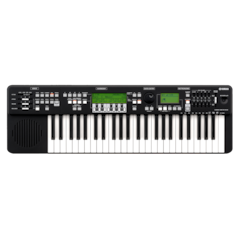Improving Intonation In The Instrumental Ensemble
Improving Intonation In The Instrumental Ensemble

Eight core principles affecting intonation
Making even incremental improvements in intonation can have a significant positive impact on the sound of any ensemble. The following tips, which increase in sophistication with each step, will help ensemble directors in the perennial pursuit of better pitch and intonation. Making improvements on these eight principles does take a willingness to invest in the process over time. Positive change will mostly be incremental but even very long and slow journeys start with small steps.
1. Instrumentation
Recruiting a balanced ensemble has a huge bearing on improving intonation. The single most important reference notes for playing well in tune are typically in the lowest sounding voices at any given moment. When most players in an ensemble are playing, these important pitches will be provided by the bass instruments (tubas, string bass, reed bass and so on). If these instruments are under represented or not represented at all, this severely compromises the ability to achieve optimal intonation.
2. Individual tone quality
It is easier to match pitch between instruments that are producing a good quality characteristic tone. As well as using the term playing “in tune”, the concept of playing “in tone” and “blending” are useful additions to teaching vocabulary to reinforce this idea.
3. Mechanical adjustment
Instrumentalists need to know how to effectively operate the mechanical aspects of their instruments that enable overall pitch change. These include: tuning slides, adjustment of mouthpiece/instrument joints, or tuning pegs/adjusters. It should go without saying that these mechanisms need to be working effectively. Stuck tuning slides or broken adjusters are going to be crippling when teaching students to work on intonation.
4. Audiation
Audiation is the process of “pre-hearing” the note you are wishing to play in your head before you produce it on your instrument. Singing instrumental parts - or even just isolated chords - can be a very helpful rehearsal technique. One way to deal with this is to have performers sing whatever pitch they need to play, in whatever octave is comfortable for their voice. Alternating between singing as accurately as possible and playing that same pitch on their instrument is an effective way to begin. There are many ways to move beyond this basic concept to reinforce audiation in your players, but by using such techniques (and the possibilities are only limited by player abilities and your imagination), we can help students make a stronger connection between their inner hearing and their instrumental playing. Invariably, pitch improves with the use of singing or humming on a consistent basis.
5. Identification of phasing
When pitches are not in tune with each other they create an “out of phase” or “pulsing” effect. It is important for ensemble players to understand that the relative speed of this pulsing is indicative of degree, i.e. faster pulsing is more out of phase than slower pulsing. Once students understand these concepts always have them try to identify this pulsing when they are attempting to match pitch to help development of their ears again.
6. Fine pitch adjustment
Performers need to be able to adjust, by very small amounts, the pitch frequency of notes being played so that they can aim for an absolute “beatless” match with other players. These adjustments are typically done via alternative fingerings, embouchure adjustments and finger placement adjustments on strings. Simple unison etudes that require players to bend pitches by small amounts (especially down) can be well worth the time investment.
7. Inherent pitch tendencies
Performers need to know the inherent pitch tendencies of notes on their instrument. All instruments have notes with flat or sharp tendencies when compared to standard pitches. While there are common tendencies on all instruments of same type (e.g. all clarinets, all trumpets), there are always some variations dependent on player variables, manufacturer, instrument quality, instrument condition and so on. It is therefore more valuable to evaluate each instrument/player individually to get the most accurate picture.
8. Harmonic series tuning - "just" intonation
When dealing with chordal sonorities, performers need to understand how notes, or “overtones”, within the harmonic series above a given “fundamental” note vary in pitch from notes in an “equally tempered” tuning system, like piano. In simple terms, tuning according to the harmonic series is known as “just” or “pure” intonation (JI), and is one of the widely used professional models for tuning sonorities on instruments capable of fine pitch adjustment. When applying the professional standard of JI, the note A 440 as tonic in an A major chord is a different pitch to that same written note A as the third of an F major chord (which in JI is approx. 13 cents flat), and is different again as the lowered 7th in a B7 chord (which in JI is approx. 32 cents flat). By the nature of their professional training and experience, professional level performers gravitate instinctively to JI because it sounds better. We need to get younger players on this same path as soon as they can hold a stable pitch with good consistency. There is no reason they can’t be taught the fundamentals of why it is important, how it works in basic terms, and what they can do to improve intonation in ensemble.
A word on tuners
Electronic tuners (or apps) can be very helpful in the identification of pitch tendencies. However, a key goal of improving intonation is the of the players’ ears. So using electronic tuners (or apps that use Equal Temperament exclusively) as a purely visual guide when working on anything other than unisons/octaves in a rehearsal is not ideal. Other than as a reference for the tonic in A major in the earlier chord examples of A major, F major and B7, the electronic tuner will give an inaccurate pitch frequency for the other given contexts of that note.
Technology that can help

A good tool for working on this whole issue is the Yamaha HD-200, or “Harmony Director”. This device looks like a regular piano keyboard: Four octaves with switchable ranges to cover seven octaves. What distinguishes it is the ability to model simple chords in both Equal Temperament and Just Temperament so that players (and conductors) can start to identify the difference and re-calibrate their ears to the sound model of JI. In “auto” mode the HD-200 can identify basic chords as you play them on the keyboard and adjust pitches automatically to sound accurately in JI. Another of its really valuable and unique features enables you to adjust every key individually for fine pitch and volume adjustment - a great way to demonstrate, aurally, many key concepts for tuning and balance.
WORDS BY: Dr. Rob McWilliams, Ph.D., M.Mus., B. Mus Ed.

WORDS BY: Dr. Rob McWilliams, Ph.D., M.Mus., B. Mus Ed.
Rob McWilliams, Ph. D., has worked in instrumental music education and ensemble direction at secondary and tertiary levels in Australia and the USA for more than 30 years. He is currently the Education Outreach Clinician for Yamaha Music Australia.
